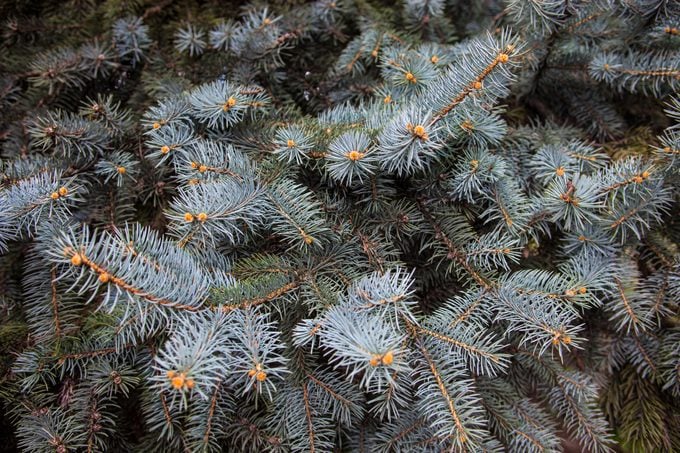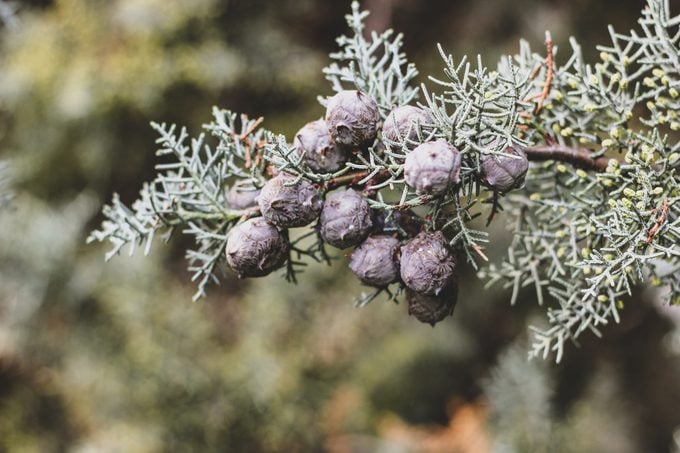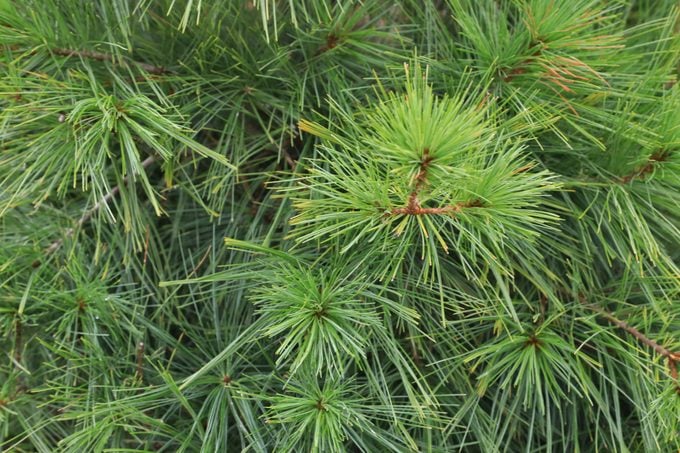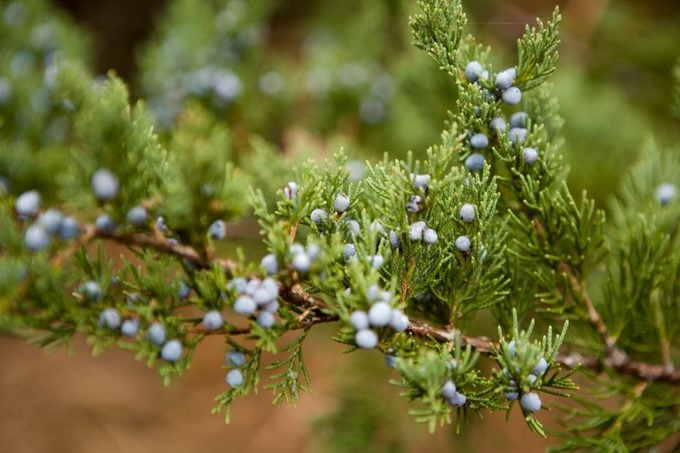8 Types of Christmas Trees You Can Grow
Updated: Nov. 28, 2023
How lovely are thy branches! Learn about the most common types of Christmas trees in America, and how to grow and care for them.
Nearly 30 million real Christmas trees are sold each year in the United States. Most of these are grown on tree farms, and the types of Christmas trees they grow vary by region. The ideal Christmas tree is one that grows quickly, has sturdy branches, and retains its needles after cutting. Want to grow your own Christmas tree for the holidays? Try one of these popular types of Christmas trees.
Also check out our guide to the best types of conifer trees and how to grow them.
Eastern White Pine
Pinus strobus, Zones 3 to 8
The long flexible needles on Eastern white pines remain on the tree long after it’s been cut, so you can put up these trees as early as you like. White pine has minimal fragrance, which may be good for allergy sufferers. They grow as much as 2 feet per year, so this tree will be the perfect size for decorating in a short time. It tolerates most types of soils and conditions, and is beloved by wildlife.
A Norfolk Island pine is an adorable mini Christmas tree.

Balsam Fir
Abies balsamea, Zones 3 to 5
Need a tree that thrives in colder climates? Balsam fir is the way to go! This tree demands cooler temperatures and moist soils, making it a popular Christmas tree types in northern areas, where it grows about 1 foot per year. The needles are highly fragrant, and are used outside of Christmas to stuff pillows and create other scented gifts.
Don’t be alarmed by blisters on the bark of young specimens; this is the “balsam” resin the tree is named for. This resin is used as a rodent repellent, essential oil, and in the preparation of microscope slides.
Don’t miss our complete guide to growing holly trees and berries.

Douglas Fir
Pseudotsuga menziesii, Zones 4 to 6
This is the preeminent Christmas tree type in the Pacific Northwest, and it’s very popular in other parts of the country, too. The Douglas fir (not really a true fir due to the scales on its cones) has two varieties, one found in northwestern coastal areas and the other in the Rocky Mountains. Both are excellent choices for decorating, with long-lasting needles and robust branches.
Grow Douglas fir in well-drained soil and protect from drought. Expect it to put on 1 to 2 feet of growth each year.
Learn how to make a tomato cage Christmas tree for birds.

Colorado Blue Spruce
Picea pungens, Zones 2 to 7
The Colorado blue spruce stands on its own among Christmas tree types, widely admired for the lovely silvery-blue color of its needles. These needles give off an unpleasant odor when crushed and have very sharp ends, but that doesn’t stop the blue spruce from finding its way into Christmas decorations around the world.
As the name implies, it’s found in the Rocky Mountains of Colorado and the surrounding states, but it adapts well to many soils and climates. It grows at a rate of 1 to 2 feet per year, and requires little or no pruning to attain the perfect Christmas tree shape.
For smaller spaces, try a dwarf Colorado blue spruce.

Fraser Fir
Abies fraseri, Zones 4 to 7
Similar in many aspects to the Balsam fir, Fraser firs are native to the Appalachian mountain region of the eastern United States. The short needles are dark green on the top and silvery green underneath, often giving the tree a bi-color appearance. It has a rich aroma, and retains its needles well after being cut.
Grow it in cooler climates at higher elevations, provide well-drained acidic soil, and expect it to grow about a foot per year. Fraser firs are narrower than some other common Christmas tree types, making them a good choice for small spaces.
After Christmas is over, check out 5 creative ideas to recycle your Christmas tree.

Noble Fir
Abies procera, Zones 5 to 6
Native to the Cascade and Coast Range mountains of the Pacific Northwest, the noble fir earns its name with stiff sturdy branches and excellent symmetry. It grows best in cool moist soil but can tolerate rockier conditions if given extra irrigation. The cones on this fragrant fir are large, reaching more than 5 inches in length.
It grows about 1 to 2 feet a year, with strong branches that curve slightly upward—excellent for holding heavier Christmas ornaments.
Learn surprising facts about Christmas trees.

Arizona Cypress
Cupressus arizonica, Zones 7 to 9
Do Christmas trees grow in the desert? Perhaps not quite, but the Arizona cypress comes close. This tall, moderately-scented evergreen comes from the American southwest and northern Mexico, where it thrives in warm dry conditions once established. The bluish-gray foliage and conical shape make it an attractive and popular tree in many xeriscapes.
It’s fast growth rate (up to 2 feet a year) makes Arizona cypress a nice choice for a Christmas tree. Give it well-drained sandy soil and lots of sunshine.
Try these small evergreen shrubs for year-round curb appeal.
Red Cedar
Juniperus virginiana, Zones 2 to 9
Red cedars are one of the best types of Christmas trees to grow in the Deep South, since they tolerate the hot and humid summers. These trees have soft dark green foliage and frosty blue berry-like cones that birds and other wildlife enjoy.
Red cedar grows throughout the Eastern U.S. in nearly any soil conditions, adding about a foot or so a year to its height. The cedar aroma is unique and instantly recognizable.
Next, learn how to grow Gin Fizz juniper for a bush bursting with berries.






















